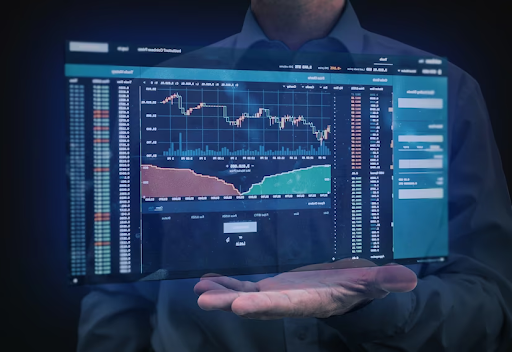Traders often use CFD contracts to expand their trading instruments. They provide an opportunity to profit from uptrends and downtrends. Let’s talk about what CFD contracts are and what you need to know to use them correctly and make a profit.
CFD contract: what is the point
A CFD contract (Сontract For Difference) is a pact made between two parties (a seller and a buyer) to transmit the price difference between an asset’s opening and closing prices during a trade. Traders frequently employ this derivative instrument.
Using CFD, you can fully trade different assets at the same time – stocks, indices, and currencies, including digital ones. But the stock market, when using such contracts, wins significantly, since the trends on it last longer, and when reports are released, securities of different issuers show a significant movement.
How CFDs work
CFD handel is the execution of trading operations for the purchase and sale of assets on the exchange and currency market. Let’s explain how it works. When, for example, a trader makes a prediction that a stock of a certain company should increase in price from $500 to $600, he can open a buy trade at the current price and close it when it reaches the estimated mark. Trading CFD contracts in such a situation does not have significant differences and is not more difficult than trading real securities. You can make a profit by increasing quotes.
Consider another situation where a market participant assumes that the price of shares will start to fall. Then it is impossible to sell them according to the classical scheme, so you should use a CFD contract for a decrease. For example, a trader assumes that the value of a company’s shares will drop from $500 to $400. If the forecast is correct, you can make money on a downtrend. To this end, they open a short position on CFD on the company’s asset at a price of $500 and set a take profit at $400.

How does CFD trading work?
We have already figured out what CFDs are and found out that you can make money on them by choosing one of two tactics. Let’s consider them in more detail.
Trading on rising quotes
When predicting an increase in the value of assets, a trader trades in stages:
- Specifies the cost level. For this, different types of analysis are used – fundamental, technical, graphical, Price Action, and others, including non-traditional methods.
- Checks the possibility of entering the market. Sometimes a trader may not start trading. For example, when there is a threat that the “correct” Stop Loss level will provoke losses that are not acceptable for a market participant. He may also not open order if the damage on the stop loss level exceeds the potential profit on the take profit.
- Opens an order to buy (BUY). When the trader has checked everything and he has no fears, you can enter the market.
With this type of trading, the success of the transactions made largely depends on the experience of the market participant.
Trading on falling quotes
Trading with a forecast of a decrease in the price of assets is carried out in the following stages:
- Choose levels to enter and exit the market. In such trading, the same methods of analysis are used as in trading on an increase in value.
- Open a sell order.
- They periodically analyze the situation and, if they consider it necessary, change the stop loss and take profit levels.
When there are fluctuations in the exchange and, in the opinion of the trader, the asset has reached its potential, he can close it manually. The market participant also has the opportunity to move Stop Loss to a breakeven area or to a position with a low income if the price of the selected asset is in a profitable area. When this cannot be done manually, a trailing stop loss can be activated. It is set automatically at the required level from the current price.
Just like in Forex Handel, CFD trading should be done only through a reliable broker. It is worth checking whether the company has a valid license and whether it provides access to different trading platforms.
Advantages of CFDs
Among the advantages of trading using CFD contracts, it is worth highlighting:
- Directional flexibility: Traders can buy or sell CFDs based on their opinion about price movements, allowing them to profit from both increasing and decreasing prices.
- Transparent fees: CFD brokers typically provide transparent conditions for trading without any hidden fees, which can be easily found on their websites.
- No ownership of assets: CFD contracts do not involve the actual transfer or storage of assets like precious metals or oil.
- Leverage: Brokers provide leverage, allowing traders to open positions that exceed their available capital.
- Diversification through a single account: Innovative platforms enable traders to manage multiple assets through a single trading terminal, simplifying and accelerating the trading process.
- Increased potential income: Brokers may offer credit funds, enabling traders to open larger positions and potentially generate higher profits.
Risks and Cons of CFDs
When using CFDs, you may face different risks:
- Leverage and risk: Large leverage increases profit potential but also the risk of draining your deposit. Use proper risk management principles (e.g., limiting risk to 2% of your deposit) or create your own strategy (1-3% risk).
- High volatility: CFDs are affected by market volatility, especially when using significant leverage. Assess volatility using the ATR indicator and mitigate risk with money management or hedging techniques.
- Speculative nature: CFDs allow speculation without owning the assets. Understand that not all trades result in profit and losses can occur.
A trader can choose the instruments for trading depending on the situation. In some cases, it is better to use CFD contracts, in others – stocks, currencies, etc.









